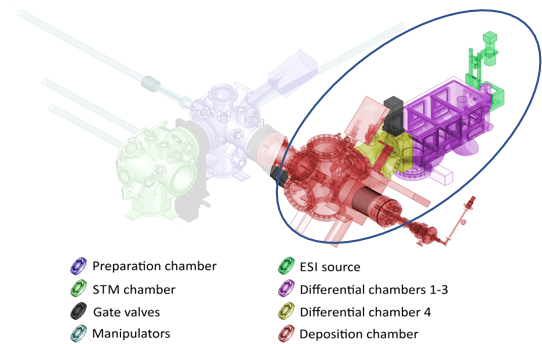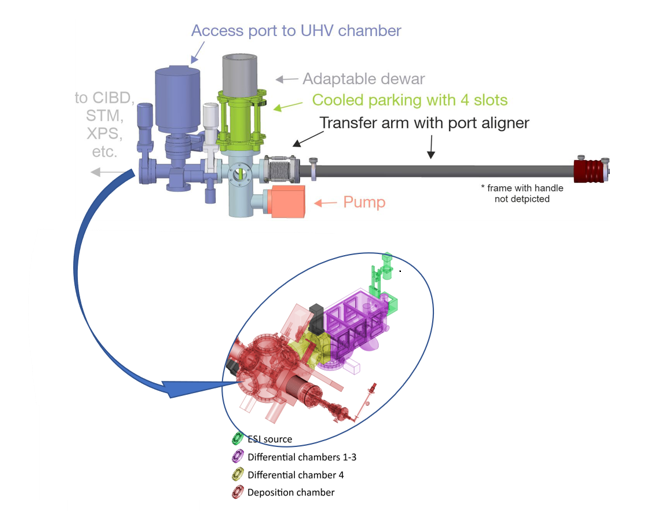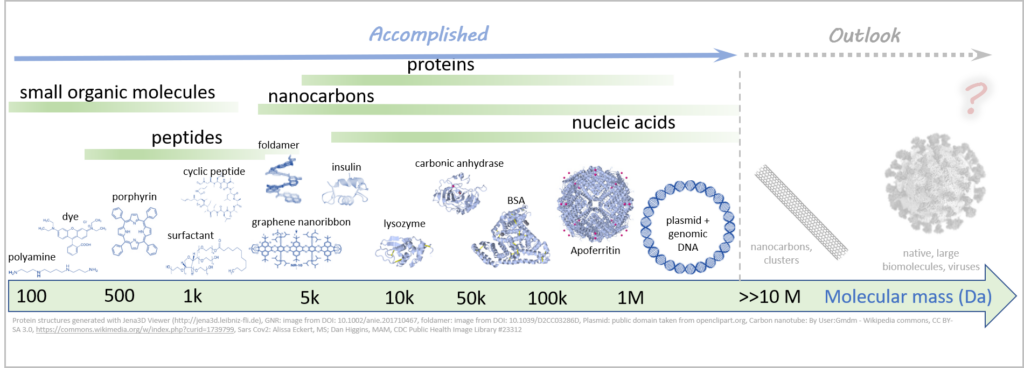Project MolShuttle
Intro: The project MolShuttle is an extension of the ES-CIBD technology (fig. 1) developed at the Chair of Molecular Nanoscience & Chemical Physics of Interfaces at the Technical University of Munich (https://www.groups.ph.tum.de/en/e20/esi-group/). With this technology a number of organic and biomolecules have been successfully deposited, such as proteins, DNA and nano-graphenes, amongst others (fig. 2). Those molecules play an important role in future nano-technology.


MolShuttle covers two aspects of the development to increase flexibility and usage:
1. A portable preparation port (PPP) providing a flexible transport option between samples prepared in the ES-CIBD system and remote surface science analytical tools (STM, AFM, XPS and alike) while keeping vacuum conditions
2. A further optimization of the main ES-CIBD system towards improved setup seeking an economic design
Portable Preparation Port (PPP)
The PPP shall enable smooth transfer of samples crafted in the ES-CIBD device to any other analytical system useful in surface science such as LT, JT and VT – STM, AFM, XPS, and more. The device is designed to keep UHV and low temperature conditions while transferring the samples even over considerable distances to e.g. a synchrotron.
Specifications of the pilot version:
• Four transport slots for different preparations
• Liquid nitrogen cooling using adaptable dewars
• Flag-style sample holders with piggyback option
• Fast access ports to various analytical tools reaching UHV within less than 1 hour

Molecules Library

